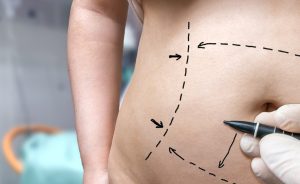 According to the annual plastic surgery procedural statistics, there were a record 15.9 million surgical and minimally-invasive cosmetic procedures performed in the U.S. in 2015. In total, it marked a 2% increase from the same data in 2014. Of course, some of that data remained the same. For instance, liposuction remained one of the most popular cosmetic procedures among patients.
According to the annual plastic surgery procedural statistics, there were a record 15.9 million surgical and minimally-invasive cosmetic procedures performed in the U.S. in 2015. In total, it marked a 2% increase from the same data in 2014. Of course, some of that data remained the same. For instance, liposuction remained one of the most popular cosmetic procedures among patients.
As popular as liposuction is, it’s not without certain risks. Similarly to tummy tucks, rhinoplasty, and other cosmetic procedures, proper recovery to minimize risk is essential. Here are a few tips that we’ve compiled to ensure your post-liposuction routine provides as speedy a recovery as possible.
Pay Attention to Dressings
Compression garments are essential for reshaping the body post-liposuction. They help reduce the risk of loosening the skin and assist your body in creating the desired contours. You don’t want to have the garment be too tight, however, or it might cause numbness or infection. It’s also essential to keep the incision-site clean and dry. In addition, you should avoid using hot and cold packs, topical antibiotics, and any scented lotions on the wound, as they might slow the healing process.
Walk Around If Possible
While rest might be the best thing for healing in the first couple of days, you want to walk around periodically to prevent blood clots from forming. This can also help stimulate blood flow and ensure steady drainage from your incision site. Getting active for just a few minutes a day can help reduce your risk. In addition, increased activity as you recover is a good idea and can help speed the recovery process. That being said, you should always consult with a doctor before starting any strenuous exercise routines.
Stay Hydrated
You want to keep yourself hydrated during recovery to maximize the healing process and reduce swelling. Drink six to eight glasses of water per day, avoid caffeinated beverages, and definitely avoid alcohol. It can inhibit your body’s ability to defend itself and leave it vulnerable to infections.
These are just a few ways that you can speed your post-procedure recovery up. If you have any questions or want to know more, contact us or speak to your surgeon.
